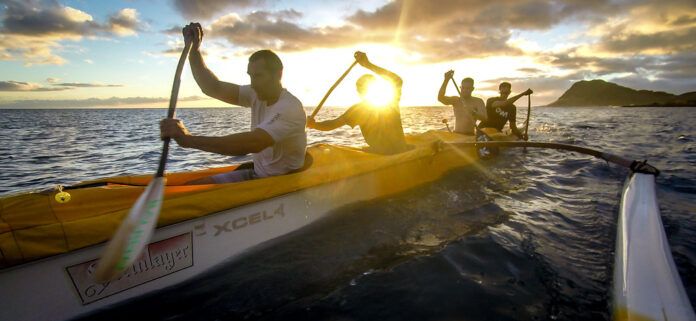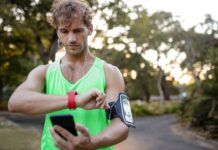A thought experiment considers a hypothesis, theory, or principle for the purpose of thinking through its consequences.
Dragon Boating is steeped in history and, rightly or wrongly, the sport tries to stay loyal to this history.
It does so by keeping tight constraints on many aspects of the sport. For example, the paddles must have the same blade shape and within certain shaft lengths.
But what if, some of these rules were relaxed? What if we could change, say, the angle offset between the paddle blade and the shaft? Like Out-rigging and Stand Up Paddle boarders have.

This post is going to explore this option and see what improvement, if any, would we see in dragon boat race times if we could alter the offset angle between the shaft and the blade.
I am going to base this thought experiment on an article titled: The Influence of Paddle Orientation on Boat Velocity in Canoeing, published by Nick Caplan from Northumbria University in 2009.
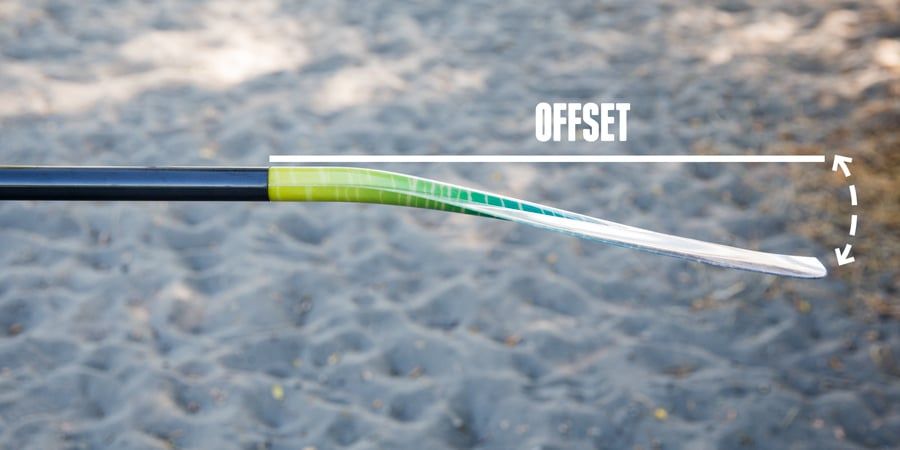
In summary, this study selected a female, elite dragon boat paddler who was filmed during a single on-water trial in an O1 outrigger canoe. The paddler was fitted with special markers to allow for future video analysis.

A mathematical model was created and compared against the measurements from the trial. This was to see how closely the model reflected reality. (It was within 1.3%)
The mathematical model was then used to simulate different paddle blade offset angles to see what effect they would have on the speed of the boat.
Before we get into the final answer, there were some interesting facts along the way.
The Angle that the Blade Sweeps through during a Stroke
A paddle is a device designed to produce drag. That means it is designed to grab onto the water and not let it slip away. No paddle is 100% perfect at this.
A paddle produces its maximum backwards force when the blade is at 0 degrees to vertical (90 degrees to the water flow). Or more simply, straight up and down.
Looking at the graph below, we can see that during the stroke:
- The paddle sweeps from -27 degrees at entry through to 50 degrees at exit.
- The paddle passes through the optimum angle for maximum backward driving force (blade straight up and down: 0 degrees) at around 0.12 seconds
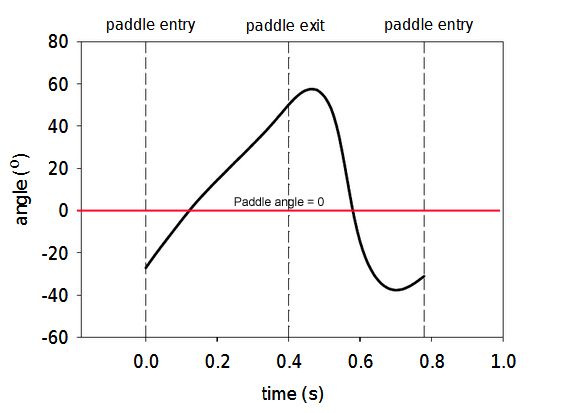
The Speed a Blade Attains during a Stroke
Here is a graph of the elite paddler’s paddle velocity relative to the boat for a complete stroke.
Note:
- That the paddle is going backwards while the boat is going forwards (hence the negative speed).
- The paddle starts to slow down from halfway through the drive phase of the stroke.
- The paddle is at maximum velocity at around 0.2 seconds into the stroke.

Optimising the Blade Angle and the Velocity
Putting the two graphs together indicates that for maximum speed we want the paddle blade angle to be 0 degrees at the same moment in the stroke when the paddle is at maximum speed.
Looking at the two graphs side by side we can see that this currently not the case.
The blade goes past 0 degrees vertical early (0.12 seconds into the stroke).
The blade is closer to 14 degrees when the paddle is at maximum speed (around 0.2 seconds into the stroke).

How do we get a zero degrees paddle angle and maximum paddle velocity to occur at the same time?
The answer:
- Change the technique.
- Change the angle that the paddle SHAFT goes through.
- Change the angle that the paddle BLADE goes through. (leave the technique and shaft angle alone)
Current rules stipulate that a typical dragon boat paddle have the shaft and the blade in line with each other.
What if we put an offset between the dragon boat paddle shaft and the blade (similar shape to outrigger paddles)?
Let’s pick an offset of 14 degrees. That means when the shaft is at 14 degrees, the blade will be at 0 degrees.
And looking at Figure 6, the paddle’s maximum velocity is reached when the SHAFT is at around 14 degrees – which means the now offset blade will be around 0 degrees – PERFECT!!
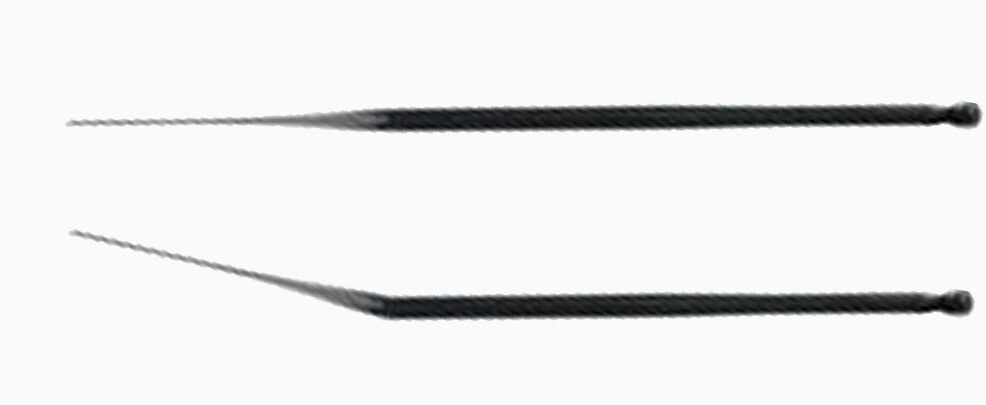
But…. Is this backed up by the mathematical model? Check out the next Figure 8 from the same paper.
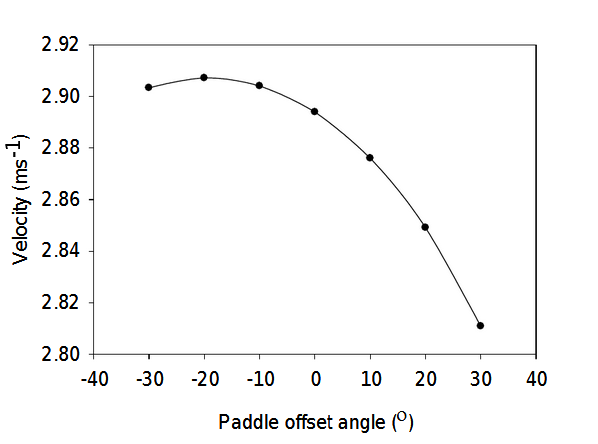
This study seems to indicate that changing the offset angle of a paddle blade does affect the velocity.
More importantly, the mathematical model puts the optimal offset at somewhere around 20 degrees seems for a dragon boat paddling technique. (Even more than the 14 degrees I deduced)
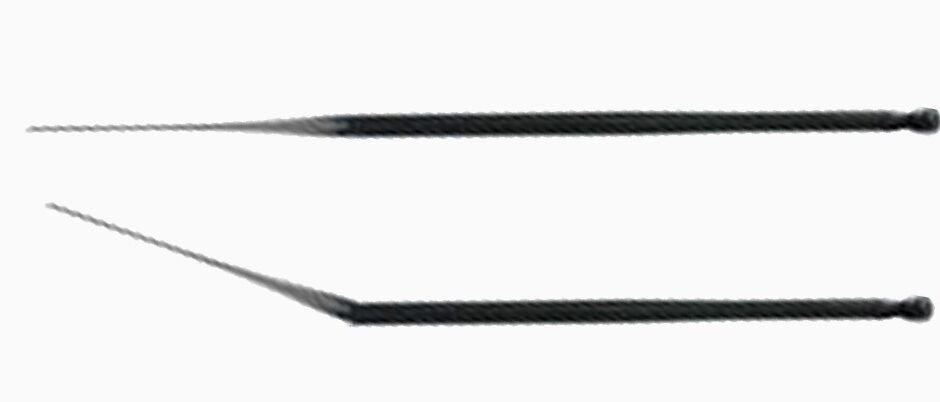
So What Difference Would it Make?
Let’s continue with this fantasy of changing the rule to allow offset paddles in dragon boating. What difference would it make to dragon boating?
Looking at the Figure 8 again, there would be a gain in speed between a paddle with a 0 degree offset and one with a 20 degree offset.
In Figure 10 it seemed to indicate a speed increase from 2.893 to 2.907 metres per second for the paddler in question. An increase in velocity of 0.48%. ( I am reading these numbers of the graph, not from the raw data)

Let’s assume a whole dragon boat crew will see a similar 0.48% increase in speed by using offset paddles.
Let’s also assume they usually complete a 500m race in 2 minutes 8.6 seconds. That equates to 14 km/hr average speed.
If they could now go 0.48% faster, they would finish the same race in 2 minute 8 seconds. That is 0.6 seconds faster and crossing the line 2.4 metres ahead of their former “non-offset paddle” selves.
Summary
We seems to have landed on the following:
- When the paddler has accelerated the paddle to the greatest extent through the water, the suggestion is that the fastest boat velocity can be achieved by ensuring that the face of the paddle is vertical at the point in the stroke
- Mathematical Modelling showed that this occurs when there is an angular offset of 20 degrees , the angle of attack of the paddle blade when peak paddle velocity occurs should be close to 0 degrees. Estimates from the graphs indicate 14 degrees and another article based on the same paper has come to an answer of 12 degrees2.
- It seems to indicate is that the optimal offset is determined by the technique of the paddler. e.g. If you are a paddler that rolls your top hand over through a stroke then your shaft will go more negative and therefore you would need a greater offset angle to ensure your paddle blade is vertical at the point max. paddle velocity.
- “The orientation of the paddle blade through the stroke should be adjusted to suit the change in paddle velocity generated by the movement of the paddler”1. (Maybe this can be done without a paddle blade offset. Hmmm)
- This raises the question of what other changes could be made to the sport of dragon boating to increase performance? Just curious! Another thought experiment for another day.
- Caplan, Nick. (2009). The Influence of Paddle Orientation on Boat Velocity in Canoeing. International Journal of Sports Science and Engineering. 03. 1750-9823.
- The Science of Paddling, Part 11: About the Bend. https://thescienceofpaddling.net/part-11-about-the-bend
Feature Photo by AirmanMagazine on Foter.com / CC BY-NC



